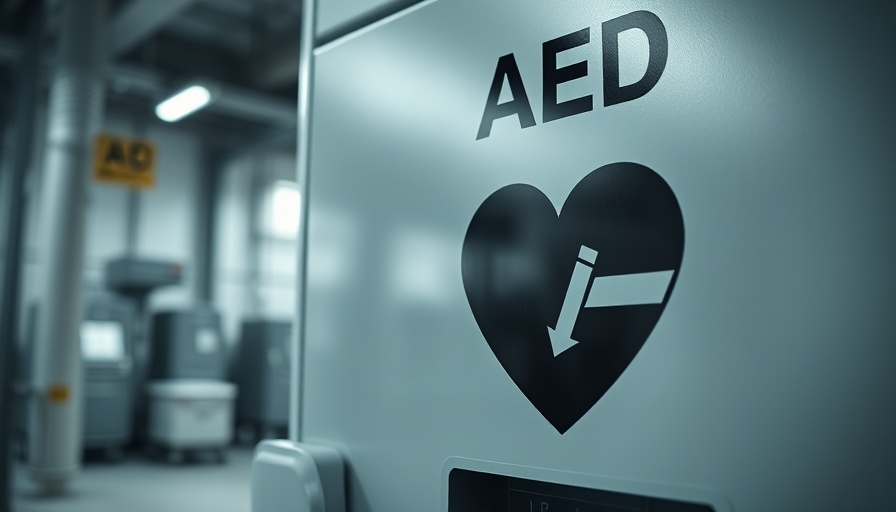
Understanding the Urgency of Green Disaster Preparation
As climate change escalates, the impact of natural disasters is more pronounced than ever. From intensified floods to rampant wildfires and devastating hurricanes, the alarming frequency and severity of these events underline a critical need for effective disaster preparation. To safeguard not only our families but also our planet, embracing sustainable disaster solutions is paramount.
Why Sustainable Preparation Is Essential
A recent FEMA report highlighted a disconcerting statistic: only 51% of Americans felt adequately prepared for disasters in 2023. This reveals a gaping hole in disaster readiness, especially considering that traditional emergency kits often rely heavily on single-use plastics and fossil fuel-powered tools, which contribute to long-term environmental issues.
The urgency for sustainable solutions is underscored by the sharp rise in disaster costs—an eye-watering increase of nearly 400% since the 1980s. Adopting eco-friendly measures not only ensures direct preparedness but also actively minimizes our carbon footprint, creating a win-win for our households and the planet.
Creating Your Sustainable Emergency Kit
A sustainable emergency kit, or go-bag, serves as a portable survival resource during emergencies. Here are some eco-friendly essentials to consider:
- Non-perishable Food: Opt for organic canned goods, freeze-dried meals in compostable containers, and buy dried staples like rice and oats in reusable glass jars.
- Water Purification: Instead of bottled water, use portable water filtration devices or purification tablets that eliminate harmful bacteria without generating plastic waste.
- First Aid Supplies: Replace plastic bandages with biodegradable options. Stock organic cotton gauze and glass containers for antiseptics.
- Multipurpose Tools: Choose solar-rechargeable batteries over disposables to power your devices responsibly.
- Hygiene Products: Use compostable wet wipes and biodegradable soaps, steering clear of environmentally harmful detergents.
- Storage Solutions: Efficiently store water in food-grade tanks. These containers also offer lasting utility post-disaster.
- Digital Documentation: Safeguard essential documents digitally to reduce waste and protect them from physical damage.
Fortifying Your Home Against Natural Disasters
Beyond personal preparedness, making your home disaster-resilient is a critical step in safeguarding your family and minimizing environmental impact. Here’s how:
Flood Protection
Instead of traditional sandbags, consider installing water-filled cofferdam flood barriers that effectively prevent water intrusion while being reusable after emergencies. This innovative solution offers a sustainable way to protect your home against flooding.
Wind and Earthquake Resistance
Secure heavy appliances with wall straps to prevent injuries during earthquakes. Additionally, reinforce doors and windows with storm shutters or plywood to minimize damage during high winds.
Fire Preparedness
Given that cooking causes a significant number of residential fires, maintain fire extinguishers and utilize biodegradable fire retardants to minimize risks.
Storm-Proofing Strategies
Identify and trim hazardous trees and secure outdoor furniture that could become projectiles during storms. By being proactive, you can significantly reduce damage opportunities.
Effective Communication and Regular Maintenance
Planning a clear communication strategy can save lives. According to FEMA, establishing emergency contacts, meeting points, and practicing message sending can solidify family preparedness in a crisis. Furthermore, regularly check your smoke alarms and carbon monoxide detectors to ensure readiness when disaster strikes.
Stay Informed and Adaptive
Knowledge is a powerful tool in disaster readiness. Keep informed of local weather alerts and review insurance coverage to ensure adequate protection. Regularly conduct drills with your family to engrain safety protocols in preparation for those seasonal hazards that could jeopardize your safety.
Conclusion: Prepare Responsibly to Protect Our Planet
As we face escalating climate challenges, responsible disaster preparation is essential. Green, sustainable practices not only protect your home but also contribute to a healthier planet. By being proactive and preparing with eco-friendly solutions, we engage in a vital stewardship toward both our families and the environment. Let’s collectively embark on this journey of responsible preparedness, ensuring that we are ready for the uncertainties ahead while nurturing the home we all share—Earth.
 Add Row
Add Row  Add
Add 




Write A Comment